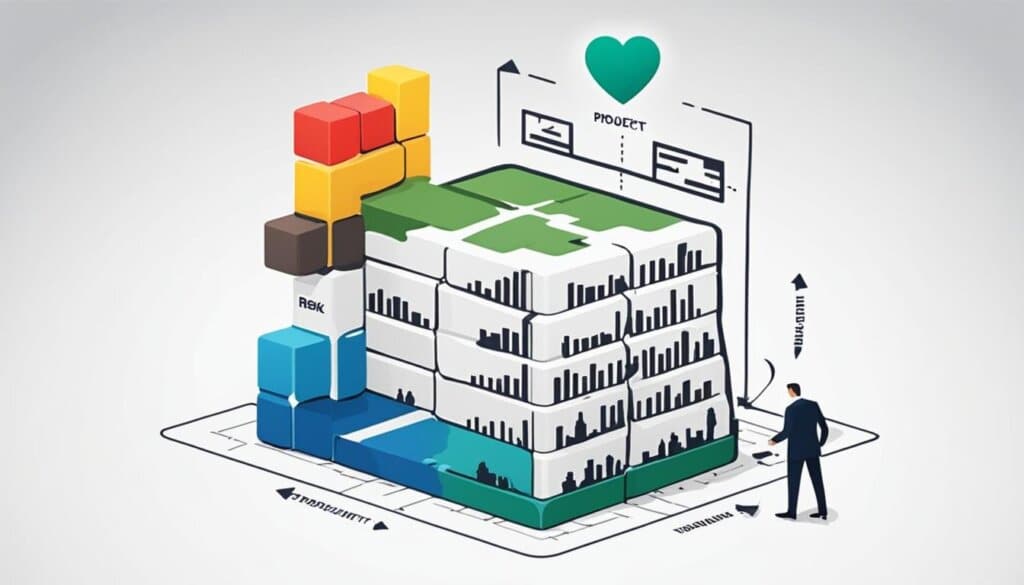Table of Contents
Risk management is the process of identifying, assessing, and controlling threats to an organization’s capital, earnings, and operations. These risks can come from various sources, including financial uncertainties, legal liabilities, technology issues, strategic management errors, accidents, and natural disasters. A successful risk management program takes a holistic approach, often referred to as enterprise risk management, which examines the relationship between different types of risks and their impact on an organization’s strategic goals. The aim of risk management is not to eliminate all risk but to make smart risk decisions that preserve and add value to the organization. It should be intertwined with organizational strategy and define the organization’s risk appetite.
Why is Risk Management Important?
Risk management plays a crucial role in today’s business landscape due to the increasing complexity of risks faced by organizations. With the rapid pace of globalization and advancements in digital technology, new and emerging risks have emerged, requiring organizations to adopt robust risk management strategies. Additionally, the impact of climate change and the recent COVID-19 pandemic have further highlighted the need for effective risk management practices.
Risk management helps organizations mitigate the impact of these complex risks and make informed decisions that ensure business sustainability, resiliency, and agility.
One of the key reasons why risk management is important is the constant evolution of risks in a globalized world. Globalization has interconnected economies and markets, resulting in risks that transcend geographic boundaries. Organizations must proactively identify and assess these risks to protect their interests.
Digital technology has also introduced new risks, such as cyber threats and data breaches, which can cause significant financial and reputational damage. Risk management strategies assist organizations in safeguarding their systems and data, ensuring the security and privacy of their stakeholders.
Furthermore, climate change poses substantial risks to businesses across industries. The increased frequency and intensity of natural disasters can disrupt operations, damage infrastructure, and lead to financial losses. Risk management enables organizations to assess and mitigate these climate-related risks, ensuring long-term sustainability.
The recent COVID-19 pandemic serves as a stark reminder of the importance of risk management. The global health crisis has severely impacted businesses worldwide, highlighting the need for resilient and adaptive risk management strategies. Organizations that had effective risk management processes in place were better equipped to navigate the challenges posed by the pandemic and make rapid adjustments to ensure business continuity.
As organizations strive to manage these complex risks, advancements in technology are playing a crucial role. AI technologies and sophisticated Governance, Risk, and Compliance (GRC) platforms are being leveraged to enhance risk management practices. These solutions provide advanced analytics, automation, and risk prediction capabilities, enabling organizations to identify and respond to risks more effectively.
Overall, risk management is vital for organizations to navigate the complexities of today’s business environment. It helps mitigate the impact of risks, ensures business continuity, and enables organizations to seize strategic opportunities while effectively managing uncertainties.
Risk Management Process
The risk management process involves several key steps that organizations must undertake to effectively manage and mitigate risks. By following these steps, organizations can identify, analyze, evaluate, treat, and monitor risks to protect their operations, assets, and reputation. Let’s explore each step in detail.
Step 1: Identify Risks
In this initial phase, organizations must identify potential risks that could impact their operations. This includes assessing threats such as IT security risks, accidents, natural disasters, and other events that have the potential to disrupt business activities. By recognizing these risks, organizations can proactively prepare for and mitigate their impact.
Step 2: Analyze and Assess Risks
Once risks have been identified, the next step is to analyze and assess their potential impact. This involves evaluating the probability of each risk event occurring and estimating its potential outcomes. By comparing the magnitude of each risk and ranking them according to their prominence and consequence, organizations can prioritize their risk management efforts.
Step 3: Evaluate Risks
After analyzing and assessing risks, organizations need to evaluate their significance and potential consequences. This involves considering the likelihood of risks occurring and their potential impact on the organization’s objectives. By evaluating risks, organizations can make informed decisions about which risks require immediate attention and which can be managed over a longer period.
Step 4: Treat Risks
Once risks have been evaluated, organizations must develop strategies to treat and mitigate them. This includes implementing measures to minimize, monitor, and control the impact of risks on the organization. Treatment strategies may involve risk avoidance, risk reduction, risk sharing, risk transfer, or a combination of these approaches. By implementing these strategies, organizations can effectively manage risks and minimize their potential impact.
Step 5: Monitor Risks
The risk management process doesn’t end with the implementation of treatment strategies. It is crucial for organizations to continuously monitor and review risks to ensure their effectiveness. This involves regularly assessing the effectiveness of risk treatment measures, tracking changes in the risk landscape, and adjusting risk management strategies accordingly. By monitoring risks, organizations can stay proactive and adapt their risk management approach to ever-evolving circumstances.
To summarize, the risk management process is a dynamic and ongoing effort that involves identifying, analyzing, evaluating, treating, and monitoring risks. By following this process, organizations can effectively safeguard their operations and achieve their strategic objectives, even in the face of potential threats and uncertainties.
Risk Response Strategies and Treatment
Risk management involves implementing various strategies to address risks. By understanding and mitigating risks, organizations can protect their interests and ensure long-term success. In this section, we will explore different risk response strategies and treatment methods that organizations can adopt to manage and minimize risks effectively.
Risk Avoidance
Risk avoidance is a strategy where organizations choose to avoid participating in activities that may carry potential risks or have negative implications. By completely avoiding certain activities or situations, organizations eliminate the possibility of encountering associated risks. This approach can be particularly effective in situations where the potential loss outweighs the potential gain. For example, a company may decide not to enter a highly volatile market to avoid the risk of significant financial losses.
Risk Reduction
Risk reduction focuses on minimizing the impact of risks by implementing preventive measures and controls. This strategy aims to contain the loss and prevent it from spreading further within the organization. For instance, health insurance providers implement risk reduction strategies through preventative care measures, such as regular health check-ups and vaccinations, to minimize the chances of costly medical treatments down the line.
Risk Sharing
Risk sharing involves transferring the possibility of loss from the individual to a group or community. By pooling resources or capital, organizations can distribute the potential risk between multiple parties, thus reducing the burden on any single entity. An example of risk sharing is when businesses form partnerships or joint ventures to share resources, knowledge, and risks. This collaborative approach helps mitigate the impact of risks and ensures a more balanced distribution of liabilities.
Risk Transfer
Risk transfer is a strategy where organizations contractually transfer the responsibility of a particular risk to a third-party. This is commonly seen in insurance contracts, where organizations pay premiums to transfer the financial burden of potential losses to the insurance provider. By transferring the risk, organizations mitigate the impact on their own resources and rely on the expertise and capacity of the third-party to handle the risk effectively.
Risk Acceptance and Retention
Risk acceptance involves acknowledging that some residual risk will remain, despite efforts to mitigate or transfer risks. Organizations analyze the potential consequences and decide to accept the risk, understanding that it aligns with their risk appetite and risk tolerance levels. Risk retention strategies involve implementing measures to monitor and manage the accepted risks, ensuring that they are kept within acceptable limits and do not significantly impact organizational objectives or performance.
By employing various risk response strategies and treatment methods, organizations can create a comprehensive risk management framework that addresses potential threats and safeguards their operations. The choice of strategy may vary depending on the nature of the risk, the organization’s risk appetite, and its specific goals and priorities.

“Risk management is not about completely eliminating risks, but about making informed decisions that lead to optimal outcomes and protect the organization’s interests.” – Jane Reynolds, Risk Management Expert
Limitations and Risk Management Standards
While risk management standards, such as ISO 31000, provide guidelines for effective risk management, they are not without limitations. Adopting and implementing these standards can present challenges for organizations, requiring new ways of working and customization to fit specific industries or businesses.
Risk management standards aim to help organizations align their IT with business objectives, manage risks, and meet regulatory compliance requirements. However, they may not easily fit into existing processes and systems, necessitating modifications and adaptations.
Despite these challenges, adopting risk management standards can bring significant benefits. It can lead to high-quality risk management processes and improved risk mitigation strategies, enabling organizations to better identify, assess, and address potential threats.
By adhering to risk management standards, organizations can establish consistent frameworks and methodologies that promote effective risk management practices. This can enhance decision-making processes, enable better risk communication and reporting, and foster a culture of risk awareness and accountability.
Ultimately, embracing risk management standards such as ISO 31000 can contribute to the overall resilience and sustainability of organizations, helping them navigate the intricacies of risk management in an ever-changing business landscape.
Key Limitations of Risk Management Standards
- Risk management standards may require significant time, resources, and expertise to implement effectively.
- Adopting these standards may involve changes to established organizational processes and systems.
- Some risk management standards may not be tailored to specific industries or businesses, requiring customization.
- Integration of risk management standards with existing frameworks and practices can be challenging.
The Benefits of Risk Management Standards
- Standardized risk management processes enable organizations to better identify and assess risks.
- Adhering to risk management standards enhances risk communication and reporting.
- Consistent frameworks and methodologies promote a culture of risk awareness and accountability.
- Effective risk management contributes to organizational resilience and sustainability.
Resources and Related Solutions
Organizations can access a range of resources and solutions to support their risk management efforts. Risk management consulting services offer valuable guidance in navigating changing market conditions and improving overall effectiveness and efficiency. These services provide expert advice, helping organizations identify and address potential risks, develop risk management strategies, and optimize risk mitigation processes.
Financial risk and compliance services are another essential resource in making risk-aware decisions. These services provide valuable insights and solutions to help organizations stay compliant with regulations and industry standards. By leveraging financial risk and compliance services, organizations can enhance their risk management practices and ensure that their operations align with legal requirements and best practices.
AI-driven risk management solutions are revolutionizing the risk management landscape. These innovative solutions leverage artificial intelligence and data integration to simplify risk management processes and enhance regulatory compliance. By automating risk assessment, monitoring, and reporting, AI-driven risk management solutions enable organizations to make more informed decisions, proactively identify emerging risks, and manage regulatory obligations more effectively.
Security governance, risk, and compliance services play a crucial role in helping organizations manage risks and ensure compliance with industry standards and regulations. These services encompass the development of comprehensive governance frameworks, risk management strategies, and compliance programs. By implementing robust security governance, risk, and compliance measures, organizations can mitigate risks, protect sensitive data, and maintain a strong security posture.
Security risk assessments are pivotal in identifying vulnerabilities and mitigating business risks. By conducting thorough assessments, organizations can identify weaknesses in their security infrastructure and develop proactive strategies to address them. These assessments provide valuable insights into potential threats and empower organizations to implement effective risk mitigation measures.
In addition to security risk assessments, threat management services offer a comprehensive framework for managing threats effectively. These services enable organizations to proactively detect, analyze, and respond to evolving threats, minimizing their impact on the business. By staying one step ahead of potential threats, organizations can protect their assets, maintain business continuity, and safeguard their reputation.
FAQ
What is risk management?
Risk management is the process of identifying, assessing, and controlling threats to an organization’s capital, earnings, and operations.
Why is risk management important?
Risk management has become increasingly important due to the growing complexity of risks faced by modern organizations. It helps mitigate the impact of risks, make rapid adjustments, and ensure business sustainability.
What is the risk management process?
The risk management process involves identifying risks, analyzing and assessing them, and developing strategies to minimize, monitor, and control their impact.
What are the risk response strategies and treatments?
Risk response strategies include risk avoidance, risk reduction, risk sharing, risk transfer, and risk acceptance/retention.
What are the limitations and risk management standards?
Adopting risk management standards such as ISO 31000 can improve risk management processes and risk mitigation, but there may be challenges in implementing them.
Resources and solutions for risk management include risk management consulting services, financial risk and compliance services, AI-driven risk management solutions, security governance, risk, and compliance services, security risk assessments, and threat management services.












